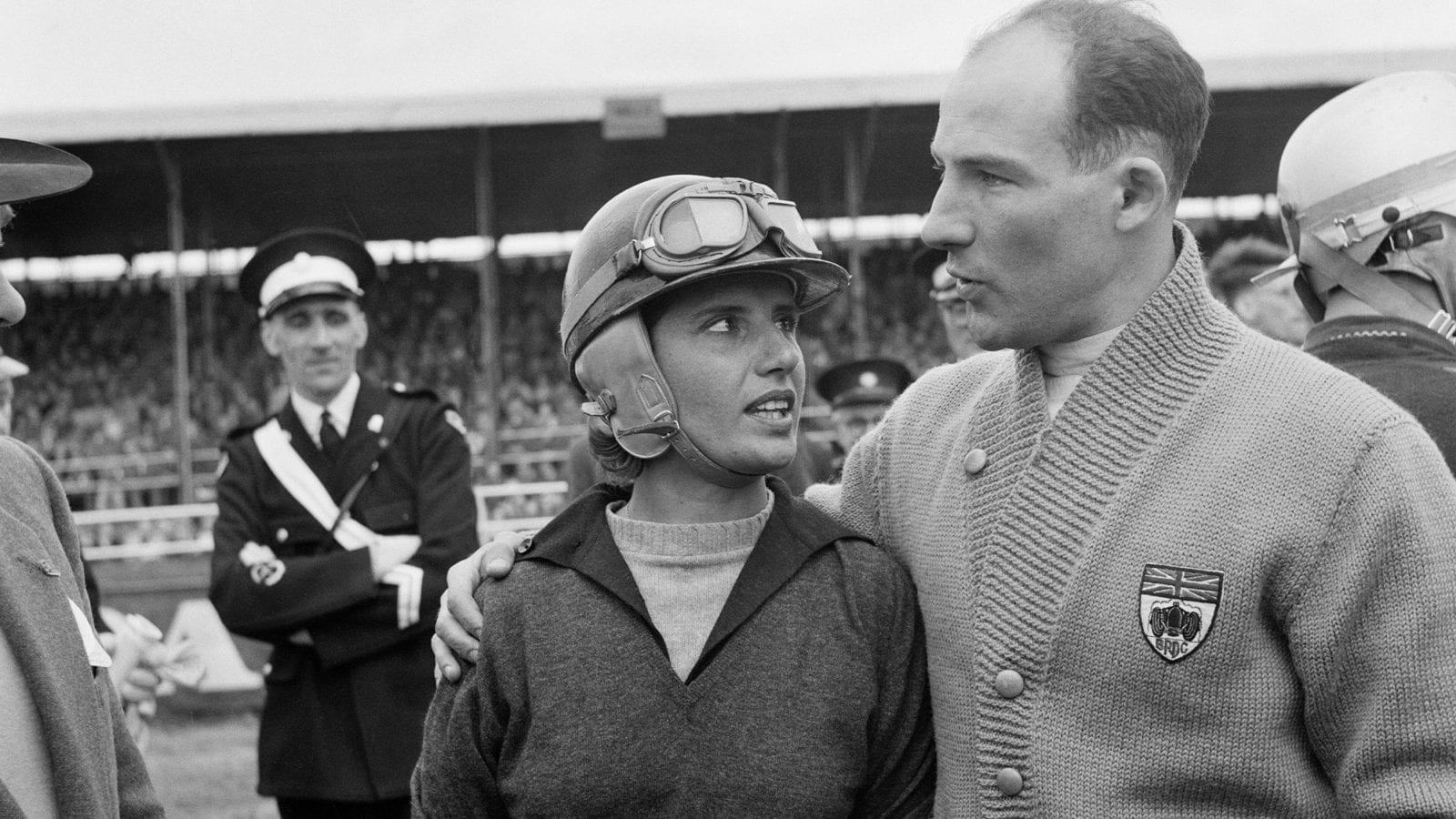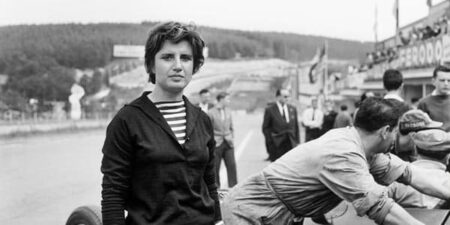“I spoke to Enzo Ferrari, told him I didn’t want to drive for his team, to be commanded by him,” she told me, “I preferred Maserati, it was more a family concern, and I could take my own car, make my own decisions. That was important for me.”
What she lacked in physical stature – she was affectionately known as ‘pilotino’ – she made up for with bravery. Juan Manuel Fangio took her under his wing and told her she shouldn’t drive so fast, take so many risks. “I called him my ‘racing father’,
I admired him, he was such a gentle man,” she told me.
De Filippis first appeared in the GP paddock in Monaco 1958, when she failed to qualify. “I was at the limit of my physical stamina,” she told me. “The 250F steering was so heavy. Maybe the limit of my fear was too far away. Fangio said I must find my limit before I went beyond my possibilities.”
At Spa she qualified last and finished 10th, a result followed by retirements in both Portugal and her home race at Monza. In 1959 she joined forces with her friend Jean Behra’s Porsche RSK team, but failed to qualify in Monaco. When Behra was killed at AVUS later in the year she retired, devastated by the loss of too many friends.
This would not end her involvement with the sport she loved. By 1960 she had married Austrian Theo Huschek and from 1979 both worked tirelessly for the Club Internationale des Anciens Pilotes de Grand Prix. She became vice-president in 1997 and was made honorary president on her 85th birthday, in 2011. She was also a founding member and chairman of the Maserati Club.
Brava, pilotino.


